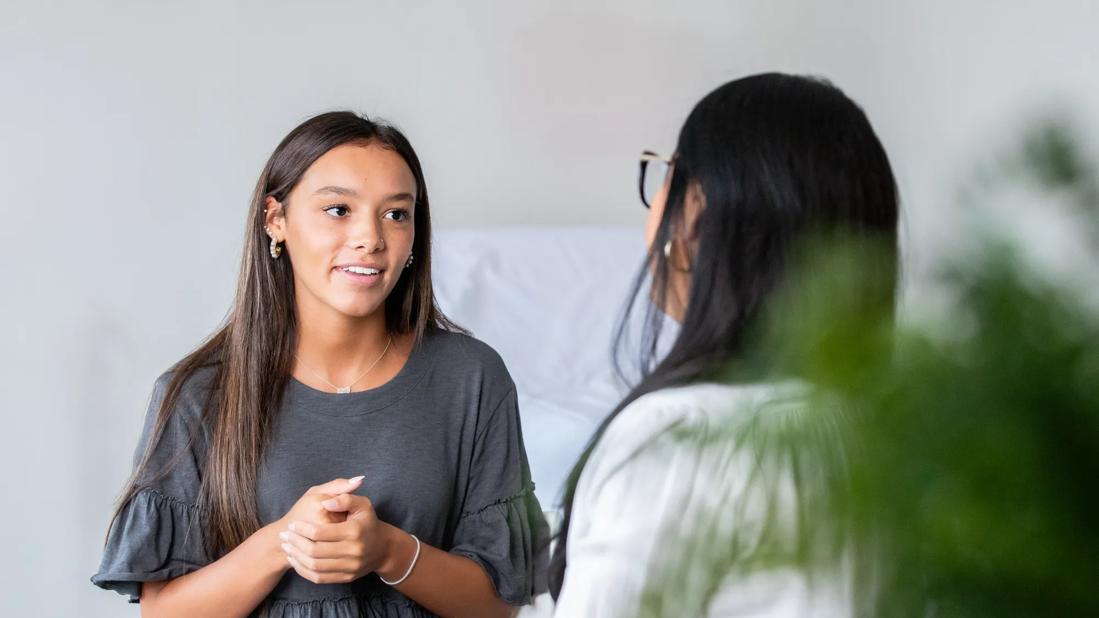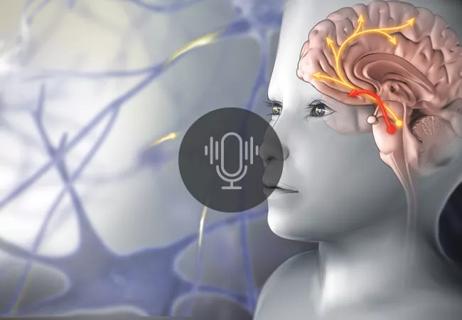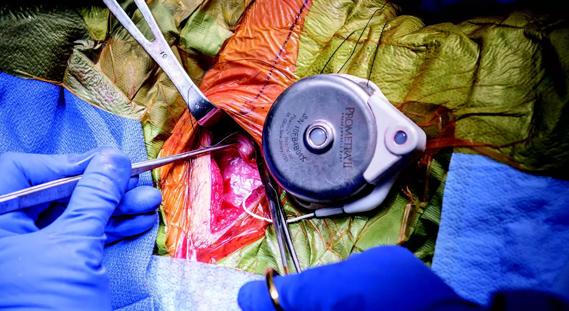Tapping into motivational interviewing to guide behavioral change

Intensive interdisciplinary pain treatment (IIPT) is the gold standard for pediatric patients with complex chronic pain conditions. However, as patients enter adolescence, treatment compliance may become an issue, and deferred care can worsen symptoms. A pediatric pain psychologist at Cleveland Clinic has been utilizing motivational interviewing, a well-established technique for guiding behavioral change, in a new way—before treatment begins.
Advertisement
Cleveland Clinic is a non-profit academic medical center. Advertising on our site helps support our mission. We do not endorse non-Cleveland Clinic products or services. Policy
Jennifer Ramasami, PhD, says motivational interviewing supports treatment readiness and adherence, invoking a sense of commitment and agency in patients who may be reluctant to start the program. She presented her data and observations using the technique at the 2025 International Symposium on Pediatric Pain in Glasgow, Scotland.
Dr. Ramasami commonly manages conditions like complex regional pain syndrome (CRPS) and amplified musculoskeletal pain syndrome (AMPS), also known as juvenile or pediatric fibromyalgia. CRPS is a neurological condition characterized by localized, often extremity-based pain and is associated with dermatologic manifestations, including changes to hair and nail growth, skin color and sensitivity. In contrast, AMPS is associated with diffuse pain throughout the body, usually due to injury, illness, psychological stress or a combination.
Treatment involves a blend of medical, rehabilitative and psychologic interventions. The latter, according to Dr. Ramasami, plays a significant role in treatment, especially the use of cognitive behavioral therapy to understand the interplay between psychological factors and pain.
"Thoughts and behaviors can impact how your body feels. In complex chronic pain conditions, the brain and central nervous system are sending out pain signals to the body, even though there isn't any degeneration or tissue damage in that site," she says. "The pain is real, and it's not going to resolve with rest or over-the-counter painkillers."
The nervous system implicated in the pain is the same one that triggers the body’s stress response, most commonly described as fight, flight or freeze she explains. Stress, anxiety and mood aren't causing the pain but can play a role in exacerbating it. Whether present before the condition or a result of it, psychological factors tend to be associated with the condition, creating a "chicken or egg" situation, notes Dr. Ramasami.
Advertisement
Psychoeducation on chronic pain is crucial in helping patients understand the relationship between the autonomic nervous system and how pain functions in their body. A basic understanding of the condition can help facilitate effective treatment. Without that knowledge, she explains, patients are less likely to be motivated to engage in treatment.
Another barrier: Teenagers are discovering their autonomy, which can complicate treatment compliance. And treatment for complex, chronic pain is not an easy fix. Progress stems from being actively engaged and motivated to make changes. Given that the program is time-limited (usually three to four weeks on average), ambivalence can hinder breakthroughs, occurring late in treatment—or not at all.
"We started wondering, what if we could boost motivation or understanding of their condition before the program even begins?" says Dr. Ramasami.
To make space for this work prior to the program, Dr. Ramasami began seeing patients and their families before starting IIPT to employ motivational interviewing, an established clinical tool to support patients better and serve as a "collaborator on their health journey."
"I'm not telling them what to do. Rather, my goal is to help them determine what they want to do and how I can support them and make it feasible." And this can be a big ask, she says. "This isn’t a passive treatment. We are asking them to engage with us even though the pain is still there. We're not promising pain relief, but we are promising that they can get back to their life if they work with us and the program."
Advertisement
Dr. Ramasami has been incorporating the technique into readiness sessions to help prime those with an innate desire to engage in the treatment. It's a technique that has been known to practitioners for decades, originating first in the treatment of substance abuse disorders. Its core elements are empathy, affirmations, reflective listening, and highlighting or emphasizing how the patient talks about change, explains Dr. Ramasami.
"The provider guides the patient to their own decision about treatment, which helps increase intrinsic motivation and commitment to the process,” she says. Dr. Ramasami also uses a visualization exercise to help patients envision their lives five to 10 years in the future, weighing the pros and cons of making a change. Overall, her goals with the technique include the following:
Dr. Ramasami has seen patients progress from initial uncertainty about the program to becoming motivated and fully engaged. Since starting this intervention,18 patients were referred to complete the motivational interviewing intervention after their initial evaluation for the pediatric pain rehabilitation program and prior to determining admission to program. After completing the intervention, 13 were recommended for admission into program, and 10 successfully completed treatment.
Advertisement
The outcomes data have been qualitative to this point. Still, based on anecdotal feedback, patients have reported a greater sense of readiness, reduced ambivalence, and a clearer focus on their values and goals.
She is eager to take a closer look at the data and compare the outcomes of those who received the pre-program technique with those who did not to determine if the intervention influenced functional outcomes.
The longer activity is delayed, the more challenging it becomes to regain function and return to daily life, and the literature supports this. However, Dr. Ramasami suspects that pairing motivational interviewing with more robust education about chronic pain may relieve some hesitancy and anxiety around treatment.
"I'm excited for our work around this to grow and become more formalized to guide patients who are ready but just need more support and education. And I get it—it feels very scary and awful for them. But our goal is to impart upon them that through movement and engagement in evidence-based treatment, over time their bodies will start feeling better,” concludes Dr. Ramasami.
Advertisement
Advertisement

Researchers seek solutions to siloed care, missed diagnoses and limited access to trauma-informed therapies

Cleveland Clinic study investigated standard regimen

Researchers identify the neurologic evolution of pain-related learning

Self-efficacy mindset, burst therapy and increased biofeedback may help improve outcomes

How functional restoration can help children with these conditions marked by unexplained pain with stigmatized symptoms

Two-hour training helps patients expand skills that return a sense of control

National Institutes of Health grant supports Cleveland Clinic study of first mechanism-guided therapy for CRPS

New technologies and tools offer hope for fuller understanding